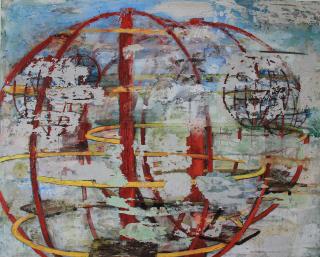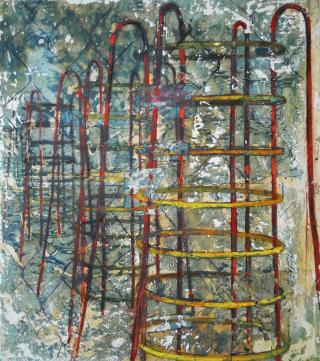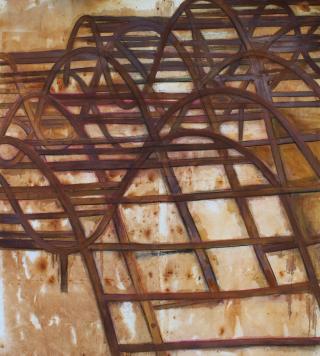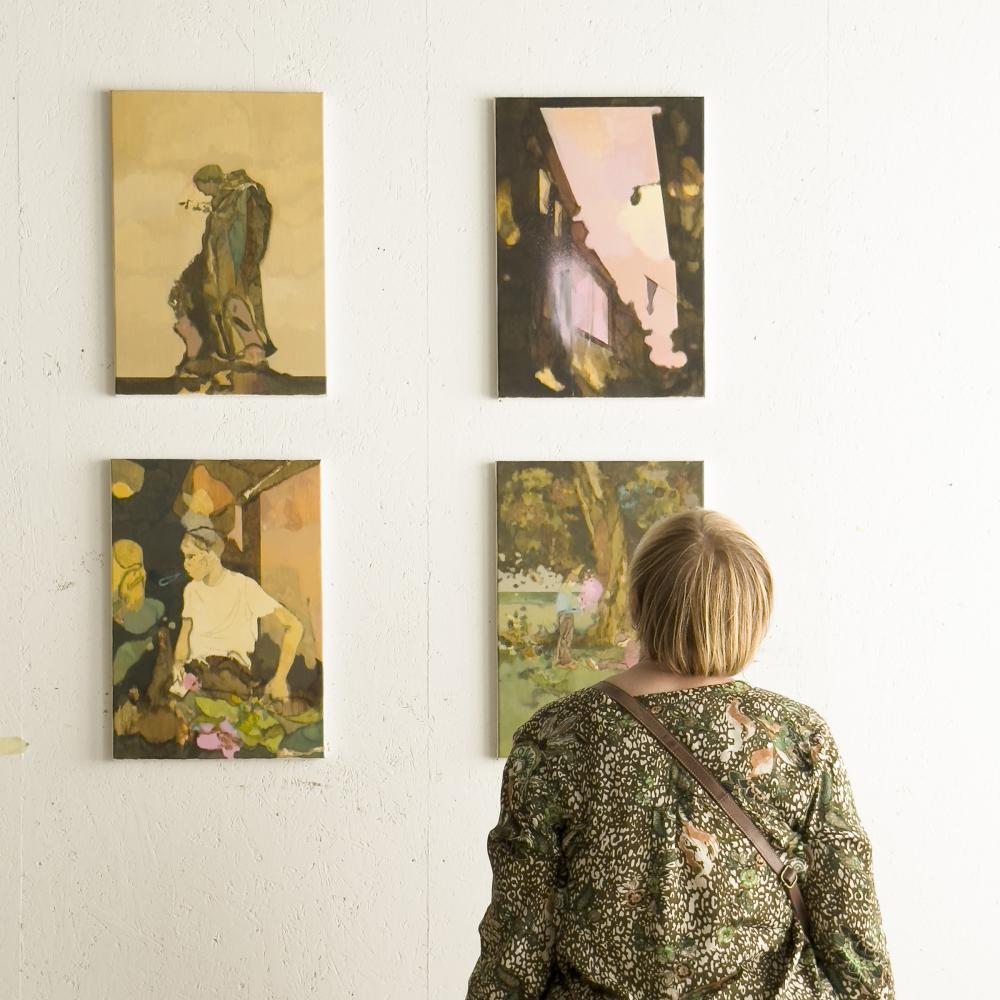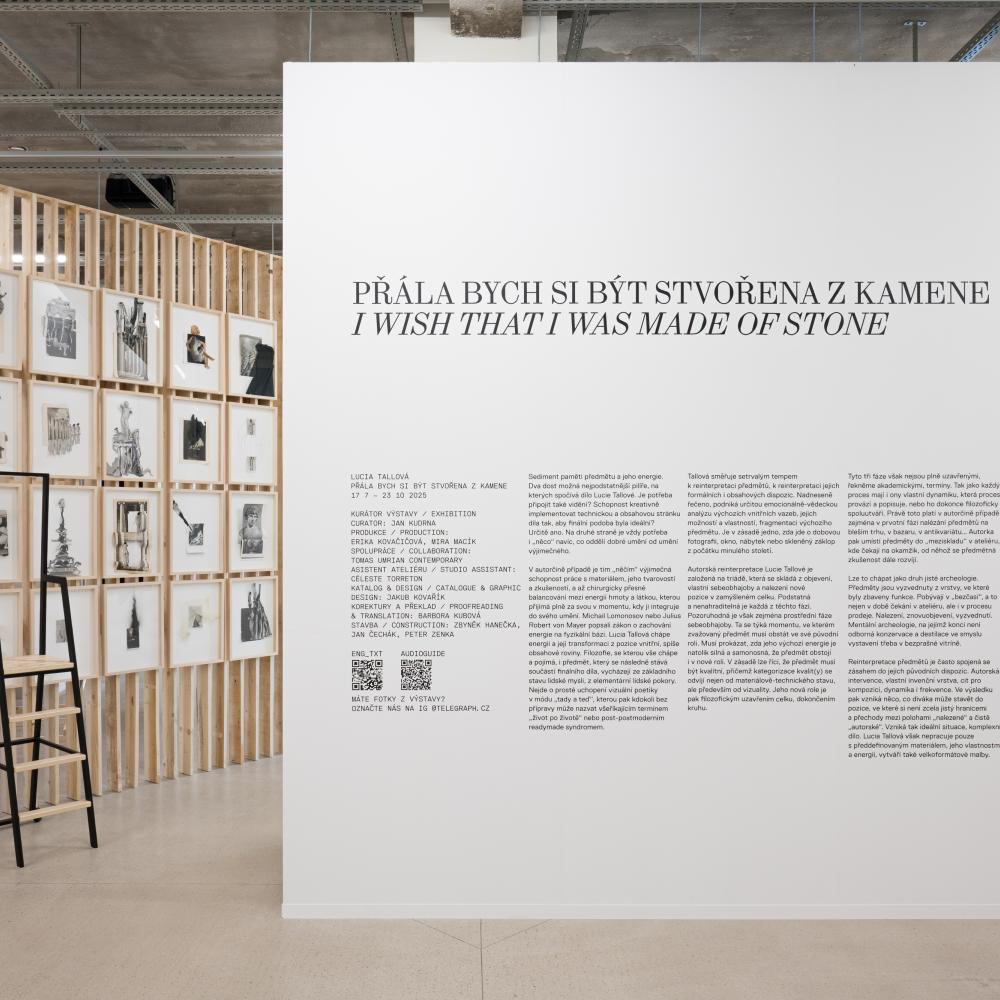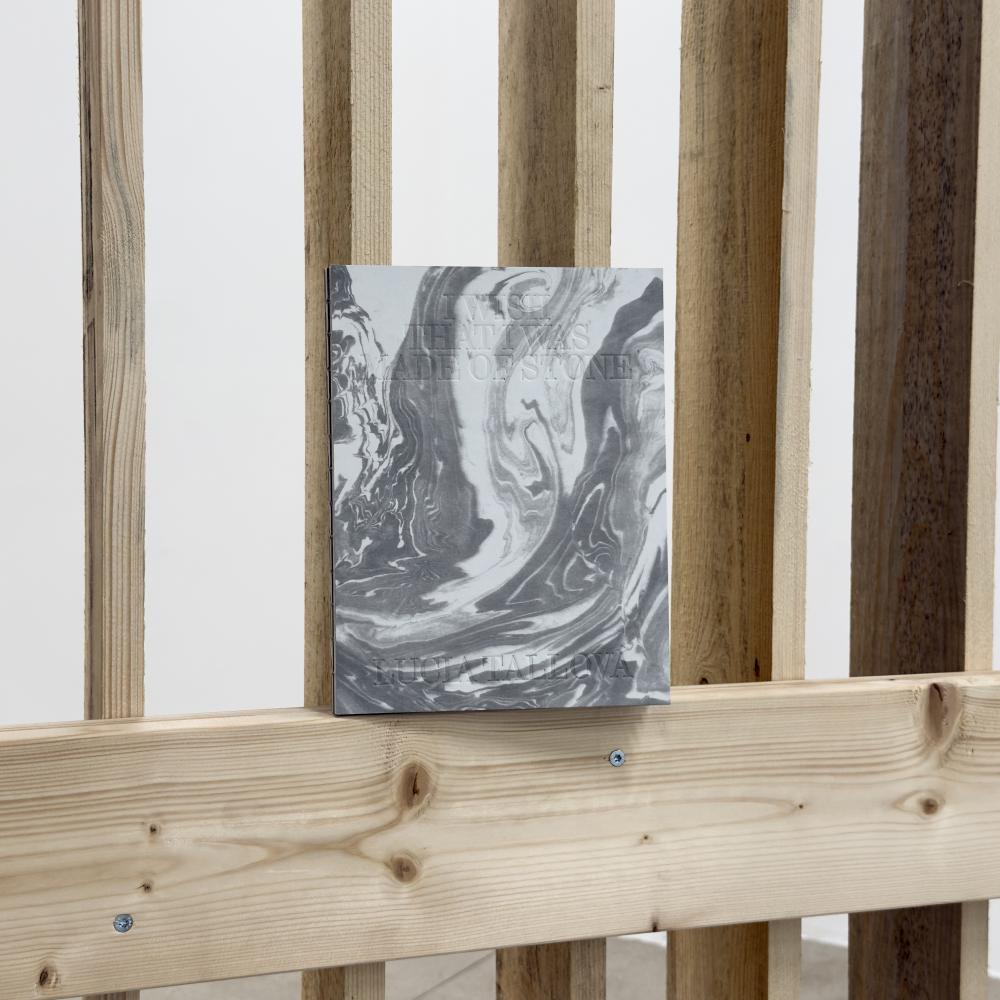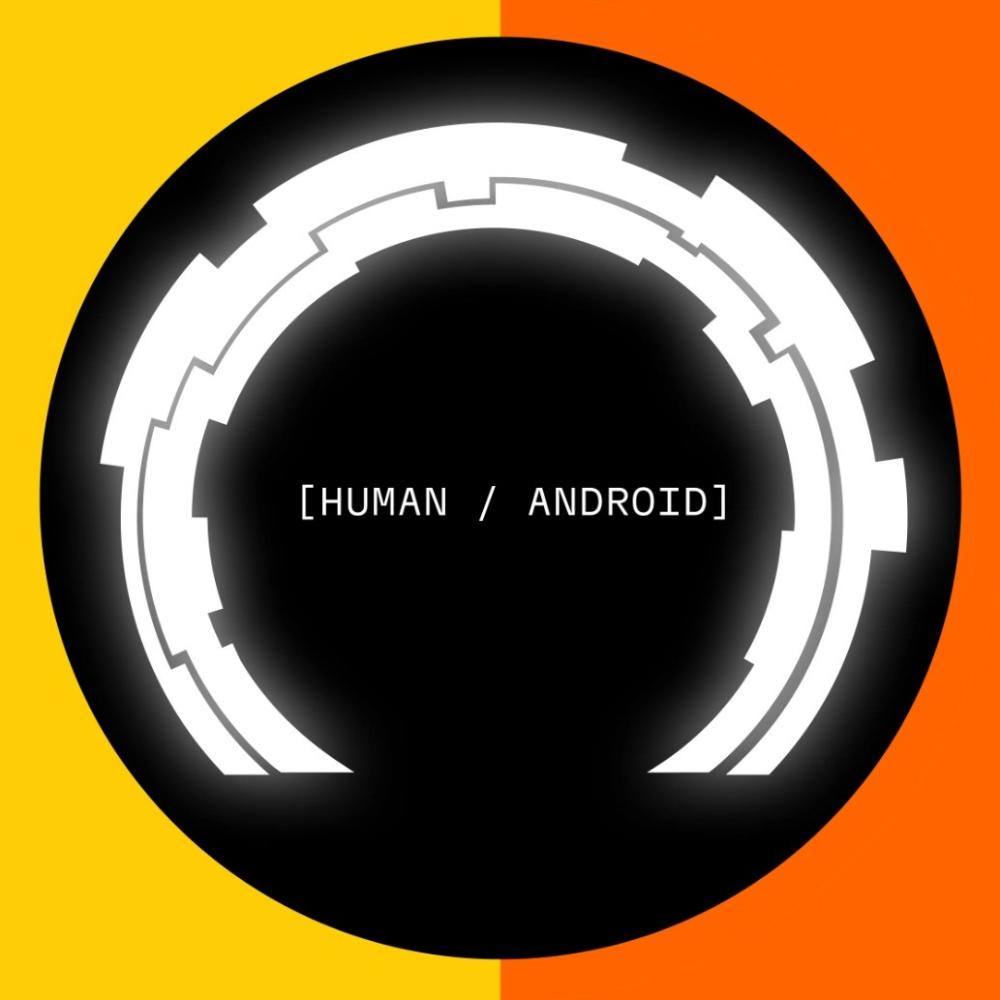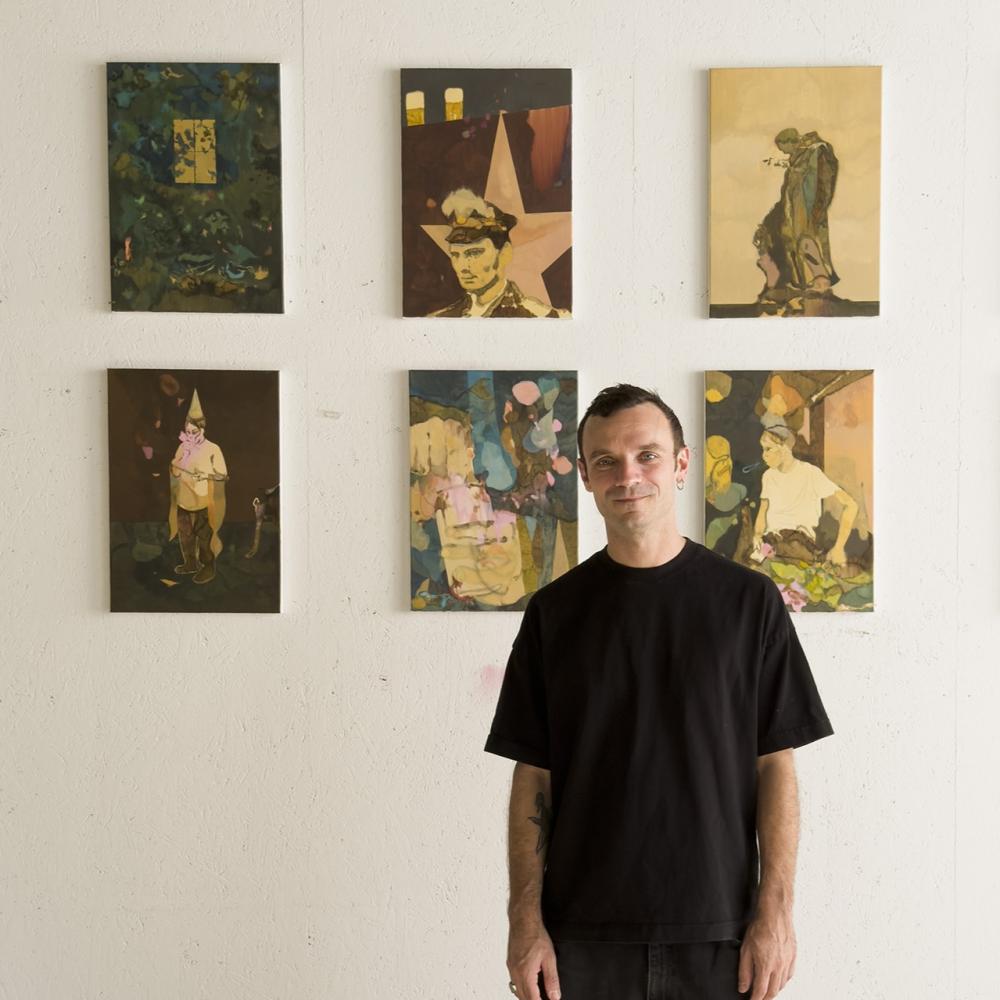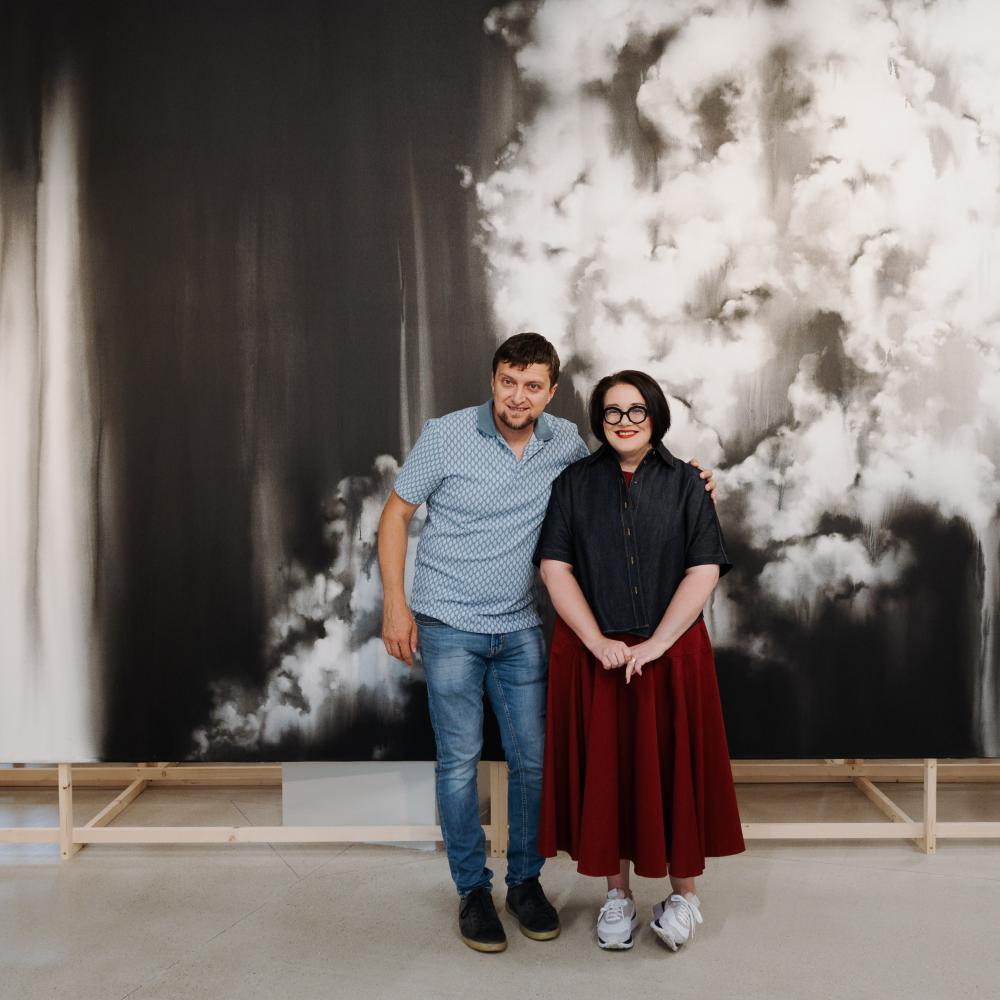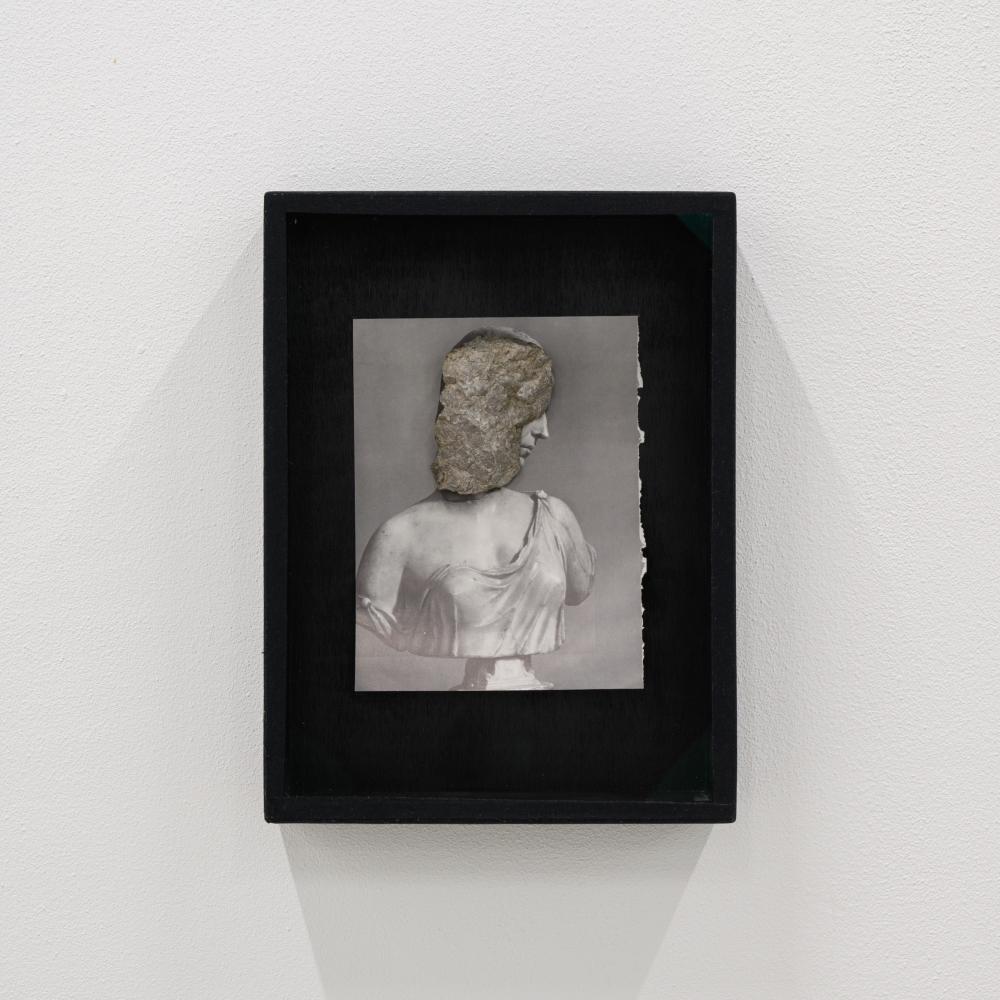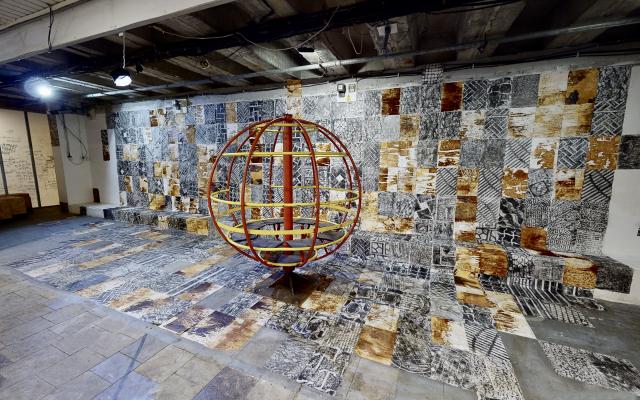
Natália Šimonová is an artist and PhD student at the Faculty of Fine Arts, Academy of Arts in Banská Bystrica. She graduated from the Open Studio of Painting under the guidance of Rastislav Podoba. In 2020, she became a laureate of the VUB Painting of the Year competition. In the same period she also won the Dean's Award of the Faculty of Fine Arts of AU for the best bachelor's thesis, extracurricular activities and representation. In 2021, she impressed the jury in the finals of the Strabag Artaward international competition and won the Recognition Award. She has participated in several workshops in Slovakia, Poland and Hungary. In her work she deals with themes of collective and personal memory, which she subjects to the question of destruction. She depicts it through classical and non-classical painting techniques and materials, working with rust, which is processual and changeable. Currently, he is concerned with the transference of classical painting into space and their confrontation. She has had several collective and solo exhibitions in Slovakia and abroad.
Your name is known in Slovakia and abroad. How did you come to study art?
You would probably expect a different answer, but in the past, especially while growing up, I didn't feel like I understood art. As a child and later in my adolescence, I saw myself more in medicine or acting. I tried to avoid math since I am a dyscalculic, the funny thing is that I use math when I paint daily. Painting didn't win out until adulthood, my interest came gradually, especially after a couple of years of studying in high school. From that time on, I fell in love with culture and art and it has stuck with me ever since. I didn't get accepted to college right away, I wanted to study jewelry, which didn't work out. I went to college in Nitra to study art teaching and history. After less than a year I left there. Then I did some extra studies and in the meantime I got to the Academy of Arts in Banská Bystrica, where I studied painting under Rastislav Podobu. Those were the most wonderful years of my life. I realized that I needed art and especially painting 24 hours a day. Sometimes I wake up in the middle of the night and read or sketch. It's still a strength.
You paint with rust in your works. In what sense do you understand this material in your works?
Rust is represented in my works on several levels, but primarily as a means of destruction. I don't work with it as an end in itself, rust is procedural. In my paintings it grows, falls off, changes colour slightly over time. Similarly to the subjects I depict. They are connected vessels that cannot function without each other. The motifs in my paintings are mostly devastated and often just affected by rust.
A big theme in your work is the past - personal and collective memory, which is then carried over into the very technique you use.
As I outlined in the previous question, I work with the medium of rust. This is closely linked to the subject matter that is central in my paintings. We're talking about constructions in public space that were made primarily in the past regime. I look at them partly critically. The constructions I draw attention to are normally unnoticed, they are secondary fragments. With each painting I hold up a mirror to the viewer, pointing out motifs that refer to the past regime without censorship. It's up to the viewer how they deal with it.
What started this fascination? I know that the impetus for your work is also an interest in socialist architecture and basically the overall visuality of that era. Do you have a personal relationship to the objects you bring into your work?
I've always been interested in history, which is probably why I once chose to study history as a backup plan. However, I didn't feel the tension that I feel when I paint and when I research architectural units from that period through the medium of painting or installation. As for the 50s. years, I often enjoy inventory or some of the design work. It is only over time that I have developed a close relationship with, for example, the structures found in playgrounds. Until then, I saw them as a natural part of the environment. As a painter, I look at everything differently, especially since the roots of my work go back to plein air painting. I am a perpetual observer, I need to constantly question my work and myself as a painter, I maintain a critical self-reflection.
I wonder if you capture only existing objects in your canvases, or if you use memories to construct your own ideas and give them a "new" life.
I start from real constructions, which I subject to my visuality. For example, the duplication of subject matter in my paintings is not based on real compositions, but it makes sense on a theoretical level. The subject matter that is the focus of my interest is reflected, I stop time, but I don't work explicitly with the concretization of the environment in question. So the viewer can't specify the location, sometimes I specify it myself and name the painting after the place that gave me the starting point for the painting.
You've done several residencies. One of them was in Paris, where you exhibited your work in the streets. What is the importance of public space in your work?
I work on issues that are in the public space. I didn't exhibit the paintings in Paris, I just made short interventions in the city. Public space is really important to me. My interventions were created years ago when I painted the painting The Robbers in the Bathtub. It was my early student work, where I depict two politicians whose names resonated especially after the murder of journalist Ján Kuciak and his fiancée Martina Kušnírová. I had to create an interpretation of the photograph at school, and I chose a photograph by Tibor Huszár, who took a picture of Mr Lasica and Mr Satinský in a bathtub full of water. I replaced their faces with these politicians. After finishing the picture, I took it to the streets of Banská Bystrica during the pre-Christmas period, the whole "trip" culminating in a shopping mall where I created a specific hustle and bustle for me. The whole event is recorded in photos or video. After all this I developed paranoia, I felt pressure and stress and was afraid if someone would attack me on the street for creating such an image, I was even afraid to open my closet with clothes. I overcame it and told myself that I would rather focus on the landscape and keep my voice down. That didn't last long and I started to do frottage, as otherwise right in the public space. Currently I frotte regularly all over the country and abroad. Most recently I am going to frottage in the Czech Republic or Austria. I need to be visible and this is also related to the many exhibitions that are always on my schedule.
You are a PhD student at the Academy in Banská Bystrica. What is the subject of your dissertation? Do you combine your exhibition activity with your doctoral studies, or are they two separate sectors?
My dissertation is about public space. The audience will be able to see in my latest work a pragmatic extension of thematic circuits or media. Working with installation, movement or other sensory stimuli becomes central, of course with my relentless concentration on the medium of painting. My priority is to non-violently meet expectations on campus, while at the same time I don't want the viewer to feel it. We are talking about art, I approach mine quite unholy, testing the boundaries. I don't divide my current studies and artistic work into separate sectors. Although, with this study in mind, I have to be more current in my painterly statement than ever before.
I have been painting continuously for years, I don't see school as something that limits me. Thanks to the Academy and to Rasto Podobo, who gave me the foundations, I am where I am today. I've always wanted to do a PhD and it's a tremendous honour that they took me on straight away. Jiri David, my current supervisor, is very nice and I am aware of the fact that the freedom and trust he has in me is not a given, the same was the case in my previous studies and with Rasto Podobo, I thank them both for that. They understood my freedom, my independence, although sometimes I also need a focused dialogue and a more objective point of view, the feedback I get from them or from the audience. Objectivity is what I am looking for in myself again with each painting or exhibition.
Author: Inka Ličková, Erika Kovačičová / Telegraph Gallery
